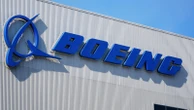Back-to-school season is officially upon us, and with it comes the usual influx of ad campaigns and last-minute trips to Target. This year, though, some parents are sensing a shift—and they’re sharing how back-to-school shopping is starting to feel untenably expensive.
On TikTok, several creators have voiced their concerns that back-to-school prices are becoming shockingly high this year, with some creators finding a pack of pencils for as much as $21 and Post-its for $19.
These reports come after the Trump administration’s second major round of tariffs on more than 60 countries came into effect on August 7. Now, parents are rushing to get their shopping done earlier than ever as potential price hikes loom.
Parents report rising back-to-school prices
According to a July report from the National Retail Federation (NRF), two-thirds of back-to-school shoppers had already begun purchasing items for the upcoming school year as of early July—the earliest start on the NRF’s record. The NRF expects the average household to spend just under $860 on back-to-school shopping for K-12 students.
“Consumers are being mindful of the potential impacts of tariffs and inflation on back-to-school items, and have turned to early shopping, discount stores and summer sales for savings on school essentials,” Katherine Cullen, NRF vice president of industry and consumer insights, noted in the report.
Indeed, school supplies are one of the categories that experts expect to be hit the hardest by tariff-related price jumps. In an analysis published on August 5, the U.S. Chamber of Commerce examined Census Bureau data for May and June of this year and compared it to the same months last year, aiming to identify which product categories are bearing the brunt of tariff-based tax increases so far.
It found that, over the past year, tariff rates on typical back-to-school items like pens, pencils, and folders jumped from an average rate of 5% to 18%, while tariff rates on clothing and shoes have jumped from 14% to over 25%.
“While much of this burden has been shouldered by wholesalers and manufacturers, the months ahead will see a larger share of these costs passed on to consumers,” the report’s author, Neil Bradley, wrote. “Americans are paying the tariffs, but not all these costs are being passed onto consumers—at least, not yet.”
Customers are taking to TikTok to express fears that big-box retailers might be actively raising prices on back-to-school related items. Several creators have specifically noted discrepancies between tag prices and display prices on clothing items at Walmart or tags with no prices altogether, with some speculating that tariff-related price hikes could be to blame.
For Walmart’s part, the company clarified in a statement to Fast Company that, when shopping for apparel, the price posted at the top of the rack is the highest price of any item on the rack, and that this system is nothing new for the company. Per a press release, Walmart is offering 14 of the most common school supplies for lower prices this year than last year.
Tariff fears compound general financial anxiety
Parents are feeling the back-to-school sticker shock this year, as concerns around potential impending tariff hikes are also compounded by a more general sense of financial stress.
Based on the June Consumer Price Index report—a metric that measures overall cost of living in the U.S.—inflation rose by 0.3% across the board in June, the highest monthly reading since January.
Another July study from Credit Karma found that 39% of surveyed parents reported that they were unable to afford back-to-school shopping this year (up from 31% in 2024), with 44% planning to take on debt as a result.
“I feel as if [prices] keep going up, $125 is insane on just supplies,” one TikTok user captioned her Walmart back-to-school haul.
“Tell me why colored pencils are now 97 cents and no longer a quarter?” another user added in a storytime on her shopping experience this year. “I felt like I was about to pass out—not from the heat, but from these prices.”









No comments